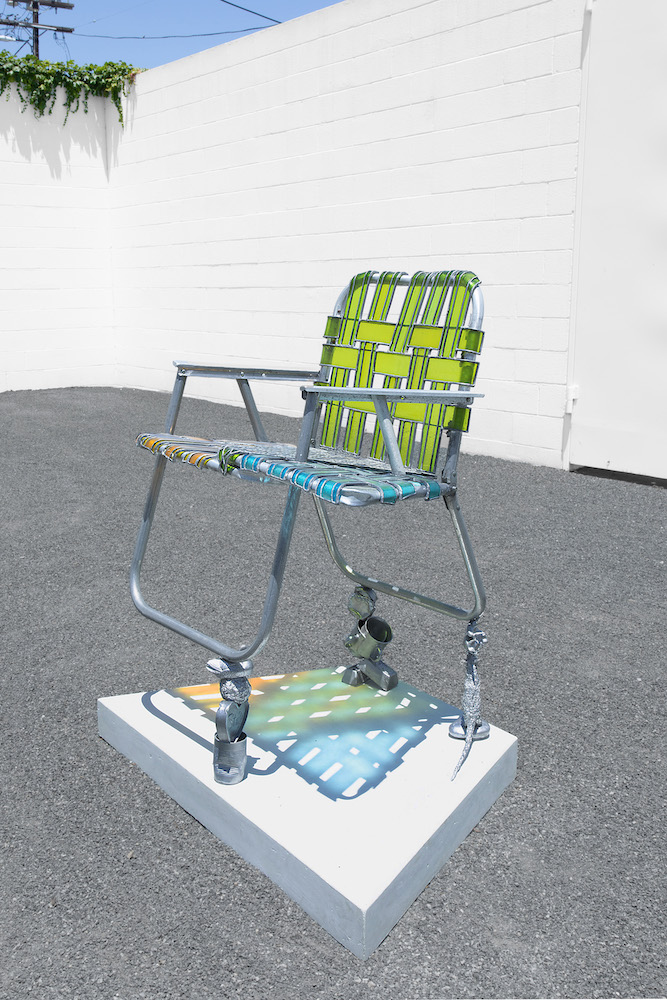Known for her life-sized stained-glass sculptures of intertwined lawn chairs, Kelly Wall uses sculpture and time to explore perspective in different ways, turning familiar objects into something uncanny and almost disorienting. In her recent outdoor show at Various Small Fires, “Time After Time,” Wall created careful constellations of aluminum sculptures of everyday objects centering around her fused lawn chairs, the shadows of the colored glass moving slowly with the sun. Including forms of rats, crushed cans and seashells, her aluminum works set on the ground in a circle became points in time, all of the elements of her show relating to each other to create a greater whole. For this issue’s “Peer Review,” Wall discusses the work of Ellen Schafer.’

Ellen Schafer, Suit I, Suit II and Suit III, all works 2024. Mirror-polished stainless steel and digitally printed, hand-painted muslin. Photo by Josh Schaedel. Courtesy of the artist.
Ellen Schafer is a sculptor, but I really see her as an installation artist. Her scenes are set for the viewer to come into, which is why seeing the work in person can be such a different experience from seeing it in photos. There are ideas of characters involved in her scenes, presented through their wardrobes, and it makes you question who the missing character is. In Schafer’s recent duo show with Nicolas G. Miller at Timeshare, titled “Plaza,” the artists created a ’90s mall environment with a soundtrack they made specifically for consuming goods; Schafer’s works included three classic clown suits, like those of a commedia dell’arte clown, with neck ruffles and polka dots, placed on metal hangers enclosed on the rack. Set up as a space created for objects to be bought, the show drew parallels between mainstream, pop consumerism and the fine-art world, honing in on the fact that making or buying art is similar to our other consumer experiences in the world. In that show, I wondered, are we the clowns? Or is the consumer the clown?
In Schafer’s work—and this is also an intention in my own practice—she doesn’t answer questions, but rather poses them. As you go through her spaces, you start asking more things. It keeps me on my toes, and I never feel like I know exactly what the answer is, but I keep moving through it. When I first saw her work at a two-person show she had with Kerstin von Gabain at the Mak Center, I was blown away with the level of execution in her sculptures. She works with textiles a lot, and in that show she had two costumes on display of sheer pink-and-white bunny suits, one for a child and the other for an adult.
Her work is a back-and-forth play of found objects being used as readymades, creating objects so highly fabricated that they look like they could be a readymade or mass-produced item. Every time I think I know what’s happening, something slightly shifts. It’s a very active experience of sculpture—sculpture takes time because you have to move in space to look around it, and this unfolding through time is such a treat to the viewer.
—As told to Alex Garner


